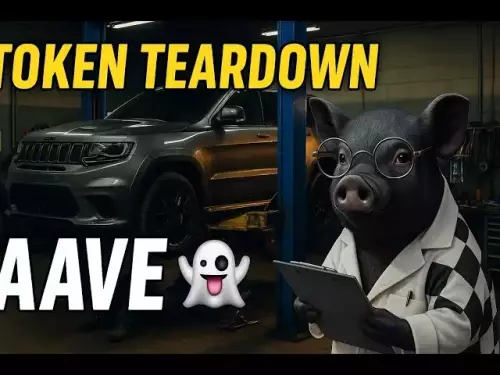-
 bitcoin
bitcoin $112195.049338 USD
2.42% -
 ethereum
ethereum $4124.915858 USD
2.81% -
 tether
tether $1.000570 USD
0.02% -
 xrp
xrp $2.861568 USD
2.25% -
 bnb
bnb $1000.346670 USD
3.04% -
 solana
solana $209.070819 USD
3.38% -
 usd-coin
usd-coin $0.999870 USD
0.02% -
 dogecoin
dogecoin $0.235379 USD
2.65% -
 tron
tron $0.335681 USD
-0.20% -
 cardano
cardano $0.803501 USD
3.38% -
 hyperliquid
hyperliquid $47.120881 USD
3.56% -
 chainlink
chainlink $21.501300 USD
3.44% -
 ethena-usde
ethena-usde $1.000571 USD
0.02% -
 avalanche
avalanche $29.793378 USD
3.62% -
 stellar
stellar $0.366964 USD
2.42%
Introduction to K-line Chart Analysis: Trend Lines and Support and Resistance Judgment in the Cryptocurrency Market
Mastering K-line charts, trend lines, and support/resistance levels enhances crypto trading accuracy by identifying reversals, breakouts, and strategic entry/exit points.
Jun 14, 2025 at 10:15 am

Understanding the Basics of K-line Charts
In the cryptocurrency market, where price volatility is a constant factor, understanding K-line charts becomes essential for traders and investors. A K-line chart, also known as a candlestick chart, visually represents the price movement of an asset over time. Each candlestick contains four key pieces of information: the open, close, high, and low prices within a specific time frame.
The body of the candlestick shows the range between the opening and closing prices. If the body is green (or hollow), it means the price closed higher than it opened. Conversely, a red (or filled) body indicates that the price closed lower. The wicks or shadows above and below the body represent the highest and lowest prices reached during that period.
A strong understanding of K-line patterns helps in identifying potential reversals, continuations, and overall market sentiment.
The Role of Trend Lines in Cryptocurrency Trading
Trend lines are one of the most fundamental tools used in technical analysis, especially in the fast-moving world of cryptocurrency. These lines help traders visualize the direction of the market—whether it's in an uptrend, downtrend, or sideways consolidation.
To draw a support trend line, connect at least two consecutive lows in a rising market. For a resistance trend line, connect at least two consecutive highs in a falling market. The more times the price touches the trend line without breaking through, the stronger and more reliable the trend line becomes.
- Identify at least two swing lows (for support) or swing highs (for resistance)
- Draw a straight line connecting them
- Wait for a third touch to confirm the validity of the trend line
Accurate trend lines can act as dynamic support and resistance zones, offering strategic entry and exit points.
How to Identify Support and Resistance Levels
Support refers to a price level where buying pressure tends to overcome selling pressure, preventing the price from falling further. On the other hand, resistance is a level where selling pressure typically outweighs buying pressure, halting upward movement.
In the cryptocurrency market, these levels often form around previous significant price areas such as:
- Previous swing highs and lows
- Psychological round numbers (e.g., $30,000 for Bitcoin)
- Fibonacci retracement levels
- Pivot points
Traders monitor how the price reacts when approaching these zones. A bounce off a support or resistance level reinforces its strength, while a break suggests a possible shift in market dynamics.
Identifying key support and resistance levels enhances decision-making by highlighting areas of potential reversal or breakout.
Combining K-lines with Trend Lines for Better Accuracy
While trend lines offer directional insight, combining them with K-line patterns increases the probability of successful trades. Candlestick formations like doji, engulfing patterns, and hammer candles near trend lines can serve as powerful signals.
For instance, if the price approaches a well-established support trend line and forms a bullish engulfing pattern, it could indicate a potential reversal upwards. Similarly, a shooting star candlestick forming near a resistance zone may suggest rejection and an imminent pullback.
- Look for confluence between trend lines and K-line patterns
- Confirm with volume indicators to validate the strength of the signal
- Avoid trading based solely on one indicator or candlestick
Using K-line patterns in conjunction with trend lines improves trade accuracy and reduces false signals.
Practical Steps to Apply This Analysis in Real Trading Scenarios
Applying this knowledge in real-time requires discipline, patience, and practice. Here’s a step-by-step guide to incorporating K-line chart analysis, trend lines, and support/resistance judgment into your crypto trading strategy:
- Open a charting platform like TradingView or Binance’s native tools
- Select a time frame suitable for your trading style (intraday, daily, weekly)
- Plot trend lines by identifying clear swing points
- Mark historical support and resistance levels manually or using tools
- Watch for K-line patterns forming near those levels
- Use volume or RSI to filter out weak signals
- Set stop-loss and take-profit levels based on risk-reward ratio
Consistent application of these techniques builds a structured approach to navigating the unpredictable crypto markets.
Frequently Asked Questions
Q1: Can I rely solely on K-line charts for trading decisions?While K-line charts provide valuable insights into market psychology and short-term price action, they should not be used in isolation. Combining them with volume analysis, trend lines, and possibly some basic indicators like moving averages or RSI will yield more robust results.
Q2: How many touches does a trend line need to be considered valid?A trend line should ideally have at least two touches to be considered valid. However, the more times the price respects the line, the stronger it becomes. Three or more touches increase reliability significantly.
Q3: Are support and resistance levels the same across all time frames?No, support and resistance levels vary depending on the time frame being analyzed. What appears as a strong support on the 1-hour chart might not hold significance on the daily or weekly charts. It's crucial to align your strategy with the time frame you're trading.
Q4: How do I handle fakeouts when trading support and resistance?Fakeouts occur when the price briefly breaks a support or resistance level but quickly reverses. To manage this, avoid entering trades immediately upon a breakout. Instead, wait for confirmation such as a close beyond the level or a follow-through candle before acting.
Disclaimer:info@kdj.com
The information provided is not trading advice. kdj.com does not assume any responsibility for any investments made based on the information provided in this article. Cryptocurrencies are highly volatile and it is highly recommended that you invest with caution after thorough research!
If you believe that the content used on this website infringes your copyright, please contact us immediately (info@kdj.com) and we will delete it promptly.
- News, September 28th, Headlines: Crypto's Wild Ride
- 2025-09-29 20:45:13
- Altcoins, Investors, and Potential Gains: Riding the 2025 Crypto Wave
- 2025-09-29 20:45:13
- Citi Token Services: Revolutionizing Cross-Border Payments and Liquidity Management
- 2025-09-29 20:50:01
- JYAI Token Gears Up for Launch: LCX Exchange Listing Imminent
- 2025-09-29 20:50:01
- Prenetics, Bitcoin Holdings, and Corporate Bitcoin: A New Era?
- 2025-09-29 20:25:11
- Swift, Altcoins, and Shifting Sands: Diving into Crypto's Latest Details
- 2025-09-29 20:25:11
Related knowledge

Practical parameter settings for a Bitcoin multi-timeframe moving average system
Sep 18,2025 at 10:54pm
Optimizing Timeframe Combinations for Bitcoin Trading1. Selecting appropriate timeframes is crucial when building a multi-timeframe moving average sys...

How can I filter out false breakouts in Dogecoin high-frequency trading?
Sep 22,2025 at 01:00am
Understanding False Breakouts in Dogecoin Trading1. A false breakout occurs when Dogecoin's price appears to move beyond a defined support or resistan...

Techniques for identifying tops and bottoms in the Bitcoin on-chain NVT model
Sep 20,2025 at 07:54pm
Understanding the NVT Model in Bitcoin Analysis1. The Network Value to Transactions (NVT) ratio is often described as the 'P/E ratio' of the cryptocur...

What does the surge in open interest in Bitcoincoin futures mean?
Sep 20,2025 at 11:18pm
Understanding the Surge in Dogecoin Futures Open Interest1. A surge in open interest within Dogecoin futures indicates a growing number of active cont...

How can I use the Ethereum USDT premium to gauge market sentiment?
Sep 18,2025 at 11:55pm
Understanding the Ethereum USDT Premium1. The Ethereum USDT premium refers to the price difference between USDT (Tether) traded on Ethereum-based plat...

What should I do if Ethereum staking yields decline?
Sep 20,2025 at 06:18am
Understanding the Causes Behind Declining Ethereum Staking Yields1. The Ethereum network transitioned to a proof-of-stake consensus mechanism with the...

Practical parameter settings for a Bitcoin multi-timeframe moving average system
Sep 18,2025 at 10:54pm
Optimizing Timeframe Combinations for Bitcoin Trading1. Selecting appropriate timeframes is crucial when building a multi-timeframe moving average sys...

How can I filter out false breakouts in Dogecoin high-frequency trading?
Sep 22,2025 at 01:00am
Understanding False Breakouts in Dogecoin Trading1. A false breakout occurs when Dogecoin's price appears to move beyond a defined support or resistan...

Techniques for identifying tops and bottoms in the Bitcoin on-chain NVT model
Sep 20,2025 at 07:54pm
Understanding the NVT Model in Bitcoin Analysis1. The Network Value to Transactions (NVT) ratio is often described as the 'P/E ratio' of the cryptocur...

What does the surge in open interest in Bitcoincoin futures mean?
Sep 20,2025 at 11:18pm
Understanding the Surge in Dogecoin Futures Open Interest1. A surge in open interest within Dogecoin futures indicates a growing number of active cont...

How can I use the Ethereum USDT premium to gauge market sentiment?
Sep 18,2025 at 11:55pm
Understanding the Ethereum USDT Premium1. The Ethereum USDT premium refers to the price difference between USDT (Tether) traded on Ethereum-based plat...

What should I do if Ethereum staking yields decline?
Sep 20,2025 at 06:18am
Understanding the Causes Behind Declining Ethereum Staking Yields1. The Ethereum network transitioned to a proof-of-stake consensus mechanism with the...
See all articles










































































